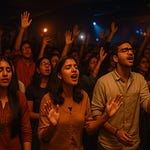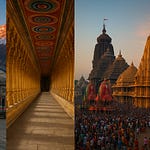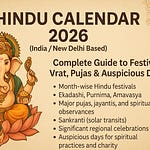The Southern Echo of a Northern Epic
In the sacred geography of India, where each step of the Divine becomes a site of pilgrimage, Dakshin Ayodhya – Sri Rama Kshethra holds a place of special reverence. Nestled near Dharmasthala in the Dakshina Kannada district of Karnataka, this temple is believed to be a resting point of Lord Rama during his Seethanveshane—his journey in search of Mata Sita after her abduction by Ravana.
While Ayodhya in Uttar Pradesh is revered as the birthplace of Lord Rama, this “Dakshin Ayodhya” or Southern Ayodhya reflects a significant episode in his exile — a moment of reflection, resolve, and divine perseverance. For those who walk the dharmic path, this place becomes a spiritual bridge between the northern roots and southern chapters of the Ramayana.
📜 Foundation & Historical Origin
The Sri Rama Kshethra was established as a tribute to the presence of Lord Rama in the southern part of India, commemorating his mythological journey through the dense forests of the south during exile.
While the exact historical foundation date of the temple structure is modern, the legends associated with this site go back thousands of years. Local sages and oral traditions assert that Rama halted here during his southward search for Sita, alongside Lakshmana, making this land sanctified by his divine presence.
Over the decades, spiritual leaders and devotees have developed this sacred site, resulting in a majestic temple complex that reflects both traditional aesthetics and timeless spirituality.
🌺 Religious and Spiritual Significance
Sri Rama Kshethra serves as a beacon of:
Dharma (righteousness) – echoing Rama's unwavering moral compass.
Bhakti (devotion) – resonating through continuous satsangs and bhajans.
Sankalp (resolve) – reminding devotees of the strength in facing life’s adversities with courage and grace.
The temple is spiritually aligned with the concept of “Ramayana Patha Yatra”, where devotees retrace Lord Rama’s exile. Here, Dakshin Ayodhya symbolizes a turning point, a divine pause filled with both human pain and cosmic purpose.
🛕 Temple Architecture & Deities
The temple architecture draws inspiration from Dravidian styles, with a peaceful ambiance and intricate carvings. Highlights include:
A central shrine dedicated to Lord Rama, carved with grace and power.
Idols of Mata Sita, Lakshmana, and Hanuman — creating a divine family setting.
Open corridors for parikrama (circumambulation) and prayer.
A satsang mandapam for group chanting, discourses, and bhajans.
A life-size Hanuman idol at the entrance greets devotees, symbolizing devotion and strength.
🕉️ Daily Puja, Rituals & Aarti Timings
The spiritual rhythm of the temple is maintained through daily pujas and rituals, which include:
📿 Daily Seva Schedule:
5:30 AM – The day begins with Suprabhata Seva and the temple doors are opened, welcoming devotees into the serene divine space.
6:00 AM to 7:30 AM – The temple performs the Nitya Pooja and Alankara Seva, where the deities are bathed, adorned with fresh clothes, flowers, and sandalwood paste.
8:00 AM to 12:30 PM – The temple is open for Darshan and Archana Sevas, where devotees can offer their prayers and participate in rituals.
12:30 PM – The Madhyana Aarti is performed, signifying the midday worship, followed by temple closure for a brief period.
4:30 PM – The temple reopens for the evening session.
6:00 PM – The Deepa Aradhana (lamp offering) is performed, illuminating the sanctum with spiritual light and devotion.
6:30 PM – The temple hosts Bhajans and Satsang, which vary by day, offering soulful music and spiritual discourse.
7:00 PM to 8:00 PM – The final worship of the day, Maha Mangala Aarti, is conducted with grandeur and devotion, after which the temple closes for the night.
Special Sevas: Abhisheka, Tulsi Archana, Rama Sahasranama Chanting (by prior request).
🌿 Festivals Celebrated
The temple hosts numerous festivals that are spiritually vibrant and culturally rich:
Major Celebrations:
Rama Navami – Grand celebration with procession, chanting of the Ramayana, special annadanam (community meals).
Hanuman Jayanti – Celebrating the birth of the greatest devotee of Lord Rama with powerful prayers and Akhanda Ramayana Parayan.
Deepotsava – The temple is lit with thousands of lamps, signifying the return of Lord Rama to Ayodhya.
Vijayadashami/Dussehra – Symbolizing victory of good over evil, with re-enactments and special poojas.
Annual Brahmotsava – A 5-day spiritual celebration with rituals, cultural programs, and satsangs.
📖 Satsang, Ramayana Parayan, and Tirtha Activities
The temple complex hosts:
Ramayana Parayanam: Daily and weekly recitations of the Ramayana, especially during Shravana, Navratri, and Chaitra months.
Bhajan evenings: Devotional songs sung by local and visiting groups.
Satsang sessions: Talks by spiritual leaders, saints, and scholars on Lord Rama's life, values, and dharma.
Gita Patha: On selected days, Bhagavad Gita is also chanted with explanations.
A Tirtha or sacred water offering area is also maintained, where devotees can take holy water and participate in rituals of purification and Sankalpa.
🧭 Travel Guide & Location Details
Address: Sri Rama Kshethra, Near Dharmasthala, Beltangady Taluk, Dakshina Kannada, Karnataka – 574216
Distance:
Dharmasthala: 3 km
Mangalore: ~75 km
Bangalore: ~300 km
Nearest Railway Station: Mangalore Junction
Nearest Airport: Mangalore International Airport (IXE)
🛣️ How to Reach:
By Road: Regular buses and cabs are available from Mangalore, Udupi, Bangalore, and Dharmasthala.
By Car: Ample parking space is available near the temple.
By Trek: Devotees coming from nearby villages often walk in groups, singing bhajans as a form of padayatra.
🏨 Stay & Facilities
Accommodation is available in nearby Dharmasthala, including:
Dharamshalas and Yatri Niwas
Budget hotels
Guesthouses run by temple trusts
Onsite Facilities:
Clean drinking water, restrooms, and sitting areas.
Temple shop with books, puja items, and prasadam.
Annadana (free meals) during festivals and weekends.
✨ Devotional Experience & What Not to Miss
Do not miss the evening aarti – the chants, conches, and flames create a deeply immersive spiritual environment.
Participate in Ramayana chanting if visiting during festive periods.
Offer Tulsi and Chandan to Lord Rama, a traditional form of devotion.
Photography is usually restricted near the sanctum, so check guidelines.
Wear traditional or modest clothing, as per temple customs.
Why Every Devotee Must Visit Dakshin Ayodhya
Sri Rama Kshethra near Dharmasthala is not just a temple—it’s a living memory of Lord Rama’s divine journey through Bharat. While Ayodhya celebrates his birth and rule, Dakshin Ayodhya reflects his resilience, humility, and spiritual grace during trials.
This is a place to connect with the inner Rama within all of us—to invoke patience, courage, faith, and righteousness. It offers the solace of silence, the power of mantras, and the touch of mythology made real.
The presiding deity at Sri Rama Kshethra is Lord Sri Rama, worshipped along with Mata Sita, Lakshmana, and Lord Hanuman. The divine presence of this sacred family creates a powerful aura of devotion, dharma, and protection.
This holy site holds immense religious significance, as it is believed to be one of the places where Lord Rama rested during his exile, particularly during the time he was searching for Mata Sita (Seethanveshane). This connection with the Ramayana gives the temple its name Dakshin Ayodhya – The Southern Ayodhya.
The puja timings begin early in the morning at 5:30 AM with the Suprabhata Seva and continue until 8:00 PM, concluding with the grand Maha Mangala Aarti.
Located near Dharmasthala in Karnataka, the temple is set amidst tranquil natural surroundings, just a short distance from one of South India's most prominent pilgrimage centers.
Some of the nearby attractions include the famous Dharmasthala Manjunatha Temple and the serene Netravati River, enhancing the spiritual and natural experience of visiting the region.
The temple celebrates several important festivals, with grandeur and devotion. Notable among them are Rama Navami, Hanuman Jayanti, and Deepotsava, each bringing a surge of spiritual energy, bhajans, and community gatherings.
Among the special rituals performed here are Tulsi Archana, Ramayana Chanting, and Satsangs led by spiritual teachers and local devotees. These rituals not only elevate personal devotion but also preserve the sacred traditions of Rama Bhakti.
The best time to visit the temple is from October to March, when the weather is pleasant and ideal for spiritual retreats, festive celebrations, and darshan.










